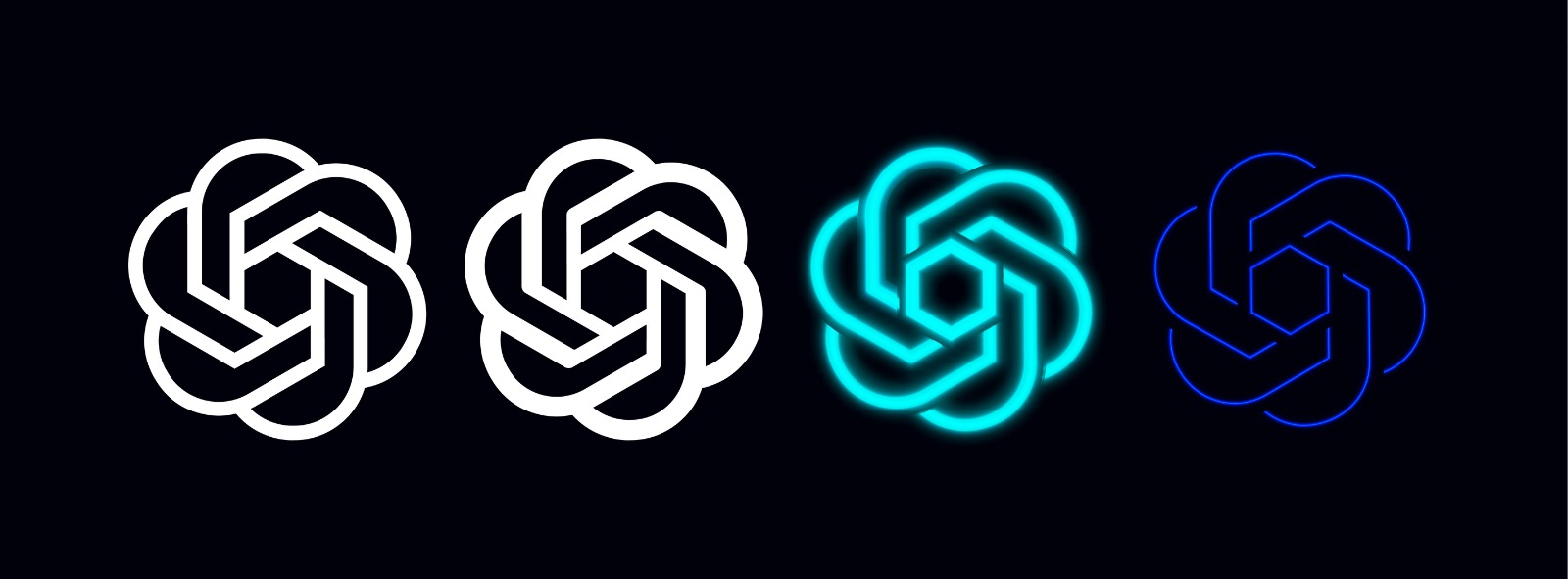Technology
From Microsoft’s new Bing to Google’s Bard, here are the major tech players trying to keep up with ChatGPT
Published
3 years agoon

ChatGPT is a state-of-the-art language model developed by OpenAI that has taken the world by storm. It is capable of natural language processing, machine learning, and deep learning, which has made it a leader in the field of Artificial Intelligence (AI). Recently, OpenAI also announced GPT-4, the successor to ChatGPT that will be faster, smarter, and more accurate than its predecessor, with the capability of parsing images and text. Shame it’ll only be available to paying subscribers for now.
The emerging technology is representative of a niche sub-sector in the AI industry known as generative AI — systems that can generate text, images, or sounds in response to prompts given by users. It is driven by a large language model, which means it uses a lot of data to understand and generate conversations.
Per a Precedence Research report, the global AI market is expected to witness a Compound Annual Growth Rate (CAGR) of 38.1% to reach $1.59 trillion by 2030 — although the impact that OpenAI’s ChatGPT will have on this space is hard to predict as yet. More than a million people engaged with ChatGPT within the first week of its launch for free public testing on Nov 30, 2022.
The stakes are high, and technology’s biggest players don’t want to be left behind, including Alphabet GOOGL, Meta Platform META, Snap SNAP, Alibaba BABA, and Baidu BIDU, have started an AI competition in response to ChatGPT. Many tech companies worldwide are adding on to the hype generated by ChatGPT.
Here’s a list of all the AI chatbots and companies vying to challenge ChatGPT
Microsoft
With the introduction of the “new” Bing, which is expected to revolutionise the way we conduct internet searches, the firm made its chatbot premiere. It also built AI-powered tools into its Edge browser.
After a signficant investment in OpenAI, the Redmond major integrated it into its offerings and made the “new” Bing available for beta testers, They were then able to ask queries like “Can you recommend places to visit in Paris?” or “What’s the best apple pie recipe?,” and then receive annotated responses outlining various tourist destinations or outlining the ingredients and steps that go along with a recipe.
But Bing may have been overly adaptable thanks to Microsoft. Users quickly found exploits with the system, including a now-disabled prompt that triggers the Bing bot to divulge its internal nickname, Sydney, and some of the parameters its developers set for its behavior, such as “Sydney’s responses should avoid being vague, controversial, or off-topic.” This prompt is now blocked.
As for Edge, Microsoft plans on adding AI enhancements that let you summarize the webpage or document you’re reading online, as well as generate text for social media posts, emails, and more.
Microsoft’s Strengthening Relationship With OpenAI
Since Microsoft has invested at least $3 billion in OpenAI to help the small tech firm create its ultra-powerful AI chatbot. The company announced in mid-January that as part of the third phase of its partnership with OpenAI, it will make a multiyear, $10 billion investment. The funding conditions stipulated that Microsoft would get 75% of OpenAI’s income until the point at which OpenAI earns back its initial investment from ChatGPT and other businesses like the image creation tool Dall-E.
The company is hopeful that advancements in generative AI may have the potential to increase revenues for its Azure cloud computing business as OpenAI officially licensed its technologies to Microsoft in 2020. Microsoft is set to leverage ChatGPT in its search engines Bing and Office apps like Word, PowerPoint, and Outlook. Recently, Microsoft announced that it is releasing a big update to Windows 11 that adds the company’s new AI-powered Bing search to the taskbar.
Microsoft’s introduction of an AI chatbot that has the potential to undermine the company’s primary line of business, search, could not go unchallenged by Google. That’s why it rushed to announce its own AI chatbot, Bard, though we still don’t know much about its capabilities.
According to Google CEO Sundar Pichai, the conversational AI service is powered by the company’s own big language model, LaMDA, and “draws on information from the web to offer fresh, high-quality responses.” According to Google, the chatbot may be used for a variety of activities, like organising a baby shower, contrasting two Oscar-nominated films, and finding recipes based on the goods you already have in your refrigerator.
In comparison to Microsoft, the company’s announcement was far more chaotic, to the point where Googlers apparently expressed their displeasure with it in internal messages. Even in the very first demo that Google released to Twitter, Bard made a factual error. Only a small test group has access to the chatbot right now; greater availability is expected in the “coming weeks.”
Meta
Meta, the business that owns Facebook, Instagram, and WhatsApp, also has its eyes on AI. It created the language model known as Galactica, which enables scientists and researchers to annotate molecules, summarise academic articles, solve math problems, and more.
The bot was trained on “over 48 million publications, textbooks, reference material, chemicals, proteins and other sources of scientific information,” according to Meta, but when the business made it available in a public beta last November, it performed poorly. The scientific community fiercely criticized the tool, with one scientist calling it “dangerous” due to its incorrect or biased responses. In a short period of time, Meta removed the chatbot.
Galactica is not Meta’s first attempt at creating an AI simulation. It also produced BlenderBot 3, which is designed to function somewhat like a personal assistant. The bot, which was made public last August by Meta, isn’t all that spectacular. Vox’s Kelsey Piper tested the chatbot and found that its responses “were extremely terrible” but that GPT-3, the framework on which ChatGPT is based, is “wildly better” than BlenderBot.
But Meta has more to offer in the field of AI. A dedicated AI team has been established by the firm, according to CEO Mark Zuckerberg. This team will eventually produce “AI avatars” intended to assist users as well as text- and image-based AI capabilities for WhatsApp, Instagram, and Messenger.
Alibaba Joins the AI Chatbot Race
Alibaba, the world’s leading Chinese e-commerce company, has also embraced the AI chatbot craze. A corporate representative told CNBC in early February that the company is internally testing a Chat-GPT alternative. Since 2017, Alibaba is said to have been experimenting with generative AI, but the business hasn’t indicated when it would reveal the tool it’s developing or what it could be able to do.
Alibaba might have to overcome certain challenges before starting its own version of ChatGPT, though. According to a Nikkei Asia story, Chinese regulators have already advised Tencent and Ant Group, which are owned by Alibaba, to censor access to ChatGPT due to worries that the bot may promote restricted content. Before releasing their own bots to the public, the corporations must also consult with the government.
All other Chinese businesses creating AI chatbots will likely be subject to similar regulations, raising the possibility that their products won’t ever be able to be released or that China’s stringent censorship regulations may limit their usefulness.
Baidu
Baidu, another Chinese corporation, is getting ready to introduce “Ernie Bot,” an AI tool, as soon as March. Together with a number of other web-related services like the mapping platform Baidu Maps, the online encyclopedia Baidu Baike, the cloud storage service Baidu Wangpan, and others, Baidu is best known for its search engine of the same name. Also, it is using AI technology to create a self-driving vehicle.
Since its initial release in 2019, Ernie—which stands for Enhanced Representation through kNowledge IntEgration—has developed into a programme that resembles ChatGPT and can provide conversational answers. Late in 2021, Baidu claimed that the model “excels in both Natural Language Understanding (NLU) and Natural Language Generation (NLG)” and that it had been trained on “huge unstructured data and a vast knowledge graph.”
Other Contenders
Snapchat is developing a “My AI” chatbot that effectively functions as an in-app version of ChatGPT and enables users to request food recommendations or make travel arrangements.
However, it has more restrictions than ChatGPT because it has been programmed to follow Snapchat’s trust and safety policies. Currently, the feature is exclusively accessible to Snapchat Plus subscribers who pay $3.99 each month, but Founder Evan Spiegel hopes to ultimately make it open to all users.
Character.AI is another one of these tools and comes from the developers of Google’s LaMDA technology. You can make or explore chatbots on the website that are based on real persons or fictional characters like Elon Musk, Mark Zuckerberg, or Tony Stark. The AI tries to reply to these bots in a way that reflects the personality of the person or character while they are “conversing” with them. These bots can also be used to produce book recommendations, develop ideas, practice a new language, and more, so that’s not all they can do.
We’re still at the beginning of what conversational AI can do, and with major players like Microsoft and Google getting on board, we’re bound to see some progress. It’ll be interesting to see how all of these tools evolve over the coming years, as well as which ones manage to make their way into our daily lives.
You may like
-


📈 Markets Open Strong : Voltas in Focus Amid Recovery Hopes
-


Couple attends own wedding virtually after being stranded by IndiGo
-


IndiGo-ing nowhere: Corporate greed and regulatory failure has grounded a nation
-


The Preliminary Findings of Air India AI171’s Tragic Crash Paint a Disturbing Picture
-


Japan’s Petabit Internet Is Faster Than You can Possibly Imagine
-


Cursed or Collectible? Labubu Dolls Likened to Ancient Demon


